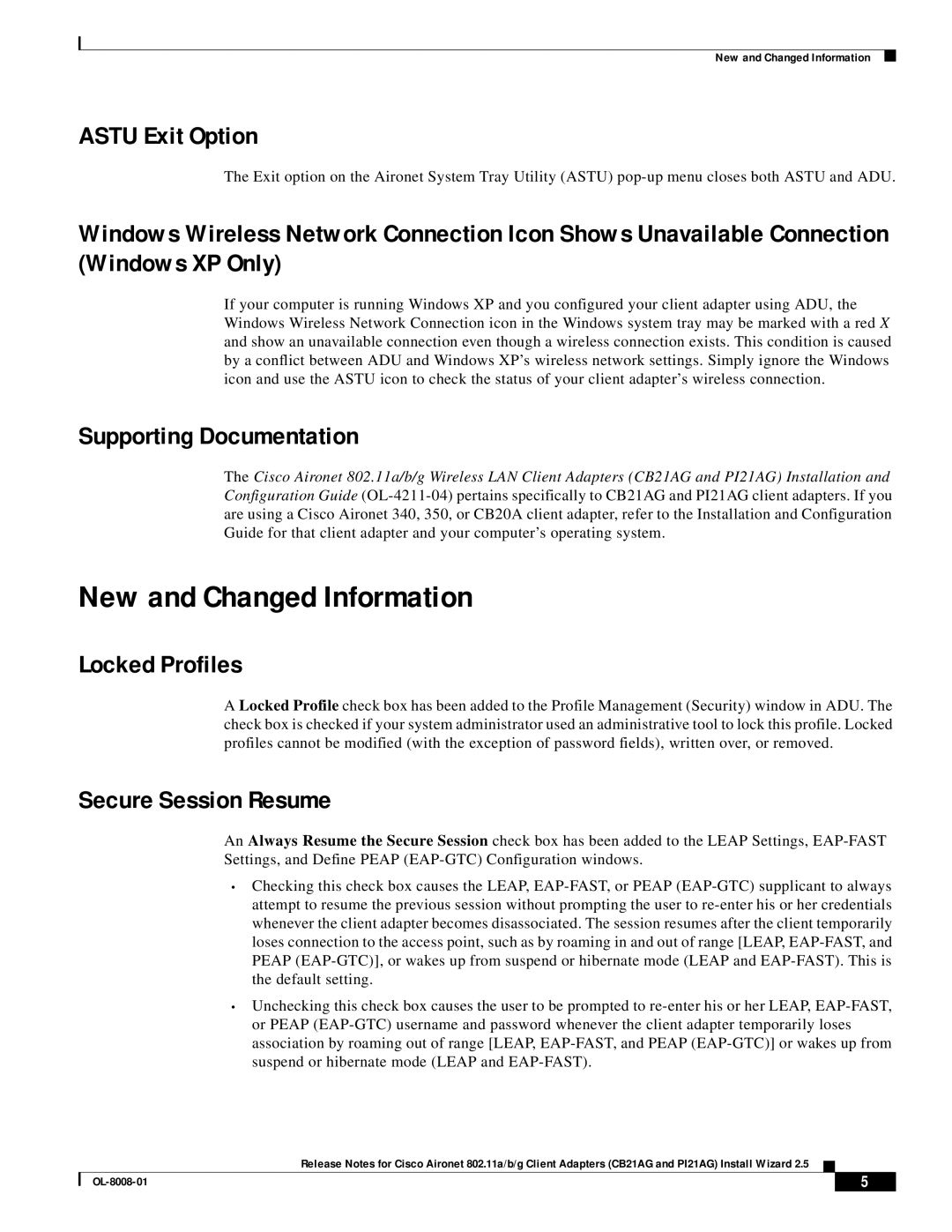
New and Changed Information
ASTU Exit Option
The Exit option on the Aironet System Tray Utility (ASTU)
Windows Wireless Network Connection Icon Shows Unavailable Connection (Windows XP Only)
If your computer is running Windows XP and you configured your client adapter using ADU, the Windows Wireless Network Connection icon in the Windows system tray may be marked with a red X and show an unavailable connection even though a wireless connection exists. This condition is caused by a conflict between ADU and Windows XP’s wireless network settings. Simply ignore the Windows icon and use the ASTU icon to check the status of your client adapter’s wireless connection.
Supporting Documentation
The Cisco Aironet 802.11a/b/g Wireless LAN Client Adapters (CB21AG and PI21AG) Installation and Configuration Guide
New and Changed Information
Locked Profiles
A Locked Profile check box has been added to the Profile Management (Security) window in ADU. The check box is checked if your system administrator used an administrative tool to lock this profile. Locked profiles cannot be modified (with the exception of password fields), written over, or removed.
Secure Session Resume
An Always Resume the Secure Session check box has been added to the LEAP Settings,
•Checking this check box causes the LEAP,
•Unchecking this check box causes the user to be prompted to
Release Notes for Cisco Aironet 802.11a/b/g Client Adapters (CB21AG and PI21AG) Install Wizard 2.5
| 5 |
| |
|
|
